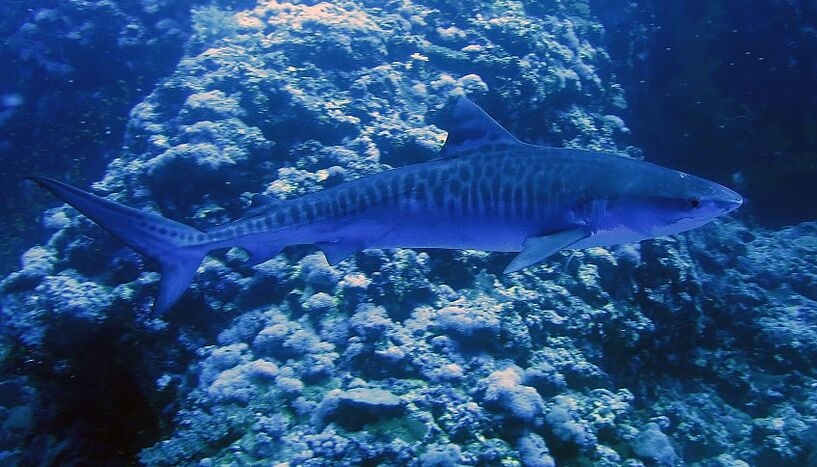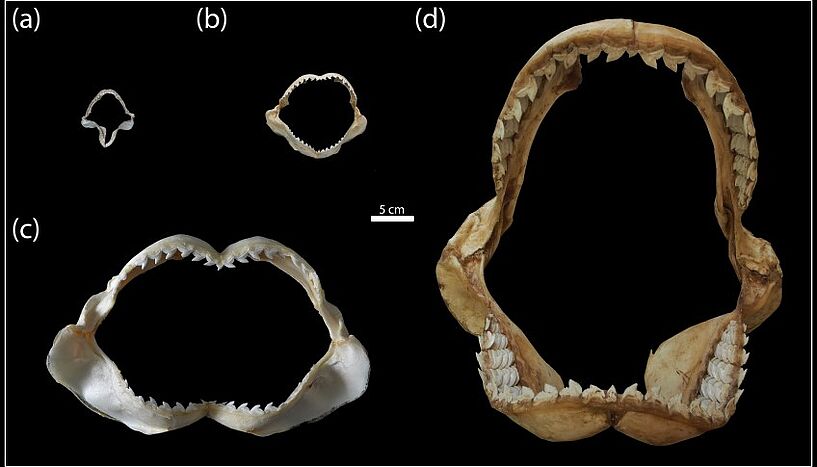We reach more than 65,000 registered users in Dec!! Register Now

How shark teeth can decipher evolutionary processes
- May 27, 2022
- 513 Views
- 0 Likes
- 0 Comment
 From embryo to turtle cracker: a team led by palaeobiologist Julia Türtscher from the University of Vienna studied the multiple changes in tooth shape in the tiger shark. The study, recently published in the Journal of Anatomy, is also central in drawing conclusions about extinct species from the myriad of preserved shark teeth in the field of palaeontology.
From embryo to turtle cracker: a team led by palaeobiologist Julia Türtscher from the University of Vienna studied the multiple changes in tooth shape in the tiger shark. The study, recently published in the Journal of Anatomy, is also central in drawing conclusions about extinct species from the myriad of preserved shark teeth in the field of palaeontology.Cartilaginous fishes, i.e. sharks, skates and rays possess a so-called revolver dentition: as soon as they lose a tooth, a new one follows, throughout their entire lives. "Accordingly, we have an incredible amount of teeth from both living and fossil cartilaginous fishes, which we can use to investigate when and how which species emerged or died out again," explains Julia Türtscher from the Department of Palaeontology at the University of Vienna. A particular challenge in this type of research is: In most shark species, the shape of the teeth changes over the course of their lives.
Multiple tooth shapes make the analysis more difficult
"This so-called heterodonty, i.e. the occurrence of different tooth shapes in the same jaw, has proven to be one of the greatest challenges for these analyses, because systematic knowledge is scarce in this area so far," says the scientist. Although numerous shark species are discovered and described each year, detailed descriptions of tooth shapes and heterodonty patterns are scarce or poorly known for most species.
For the tiger shark, this gap has now been closed with a study that was conducted at the Department of Palaeontology of the University of Vienna and published in the Journal of Anatomy at the end of April. Using geometric morphometrics on teeth of the tiger shark Galeocerdo cuvier, Julia Türtscher and her colleagues analysed and described in detail the tooth shapes for its four different developmental stages, from embryo to adult.
"Our results show that the shape of shark teeth changes gradually and subtly during the shark's life: The teeth become larger on the one hand and more complex on the other", Türtscher says. As such the teeth of these sharks exhibit multiple serrations, and each of these serrations is serrated again – secondarily – in adult animals. This complex structure allows adult tiger sharks to feed on an incredibly wide range of prey: They can even cut through turtle shells with ease, as well as through large prey such as other sharks or marine mammals.
The younger and smaller tiger sharks, on the other hand, have only simple serrated teeth: They mainly feed on smaller fish, for which this additional cutting aid is not necessary.
Tiger shark embryos already form teeth in the womb
The present study also provides the first comprehensive description of the tooth form of tiger shark embryos: According to this study, the embryos already form teeth in the mother's womb, although initially without serrations. Even before birth, however, the permanent change of teeth begins and the newly formed teeth show the first primary serrations. "This means that the first teeth are even changed in the womb – and swallowed in the process", Türtscher explains.
The larger the animals grow, the larger the teeth become and the more primary serrations are added. Secondary serrations, however, develop relatively late, when the animals have reached a considerable size. "There generally seems to be a correlation between double-serrated teeth and large body size: Tiger sharks are among the largest predatory sharks in our oceans, with a maximum length of 5.5 meters. Moreover, we also see in their extinct relatives that the large species had double-serrated teeth, while smaller species only had single serrations", explains second author Patrick L. Jambura from the Department of Palaeontology at the University of Vienna.
"Overall, the present study contributes significantly to our knowledge of dental characteristics during the evolution of the tiger shark – thus providing a basis for further morphological and genetic studies of tooth variation in sharks – and will certainly help to unravel the many developmental and evolutionary processes of present and past cartilaginous fishes", says Jürgen Kriwet, Head of the Evolutionary Morphology Group at the Department of Palaeontology.
List of Referenes
- Julia Türtscher, Patrick L. Jambura, Faviel A. López‐Romero, René Kindlimann, Keiichi Sato, Taketeru Tomita, Jürgen Kriwet. Heterodonty and ontogenetic shift dynamics in the dentition of the tiger shark Galeocerdo cuvier (Chondrichthyes, Galeocerdidae). Journal of Anatomy, 2022; DOI: 10.1111/joa.13668
Cite This Article as
No tags found for this post









